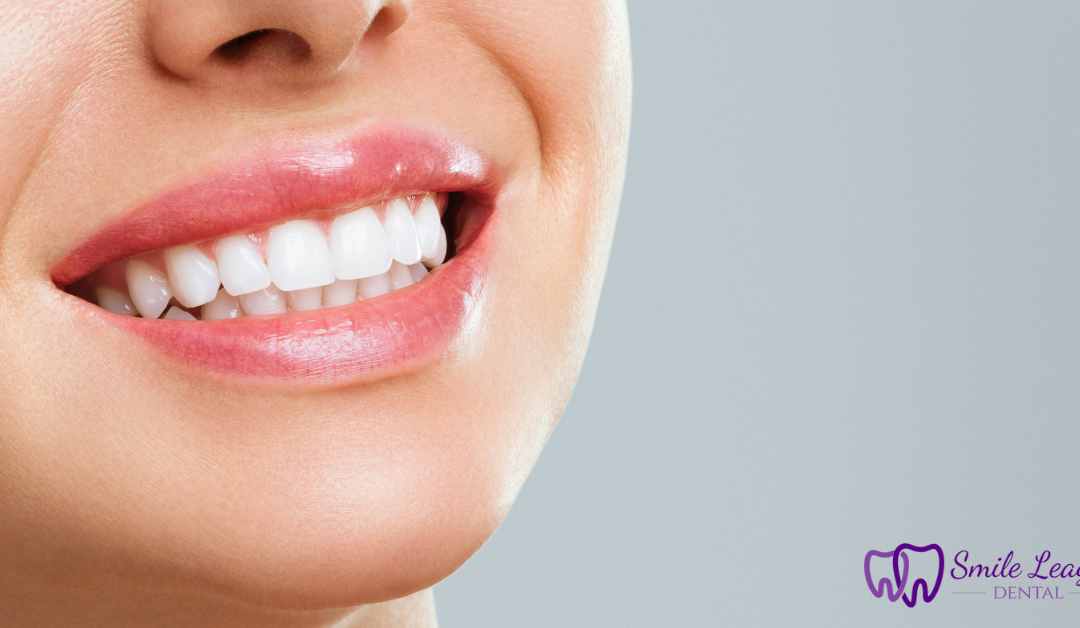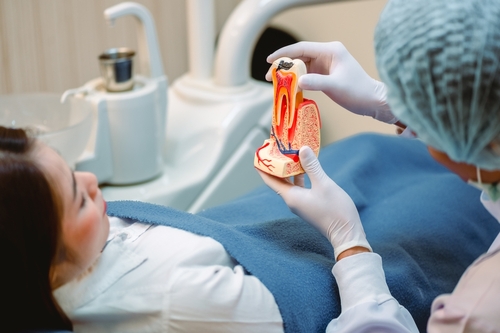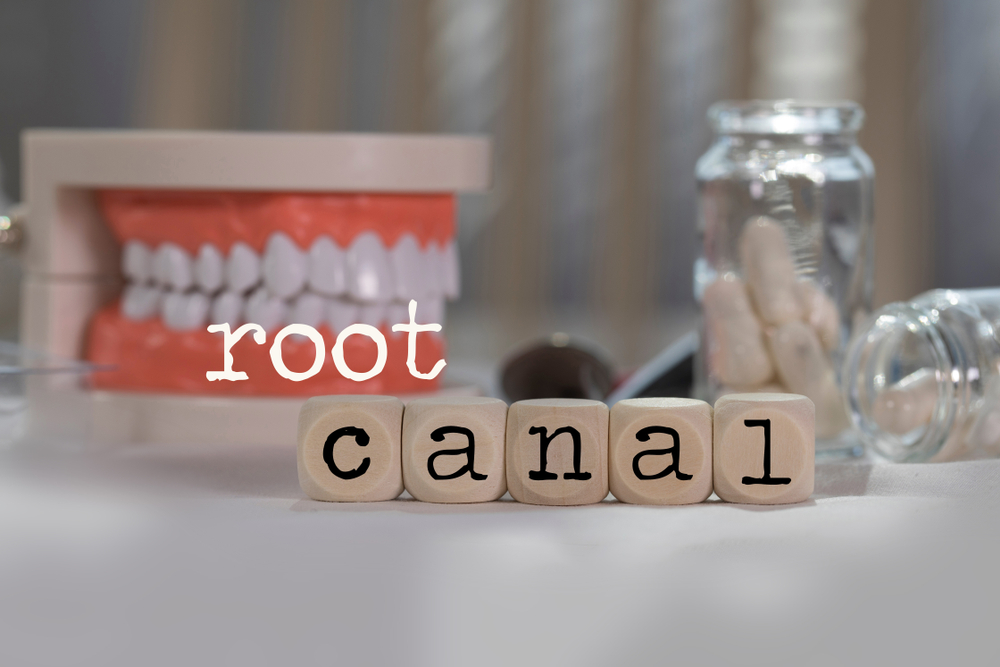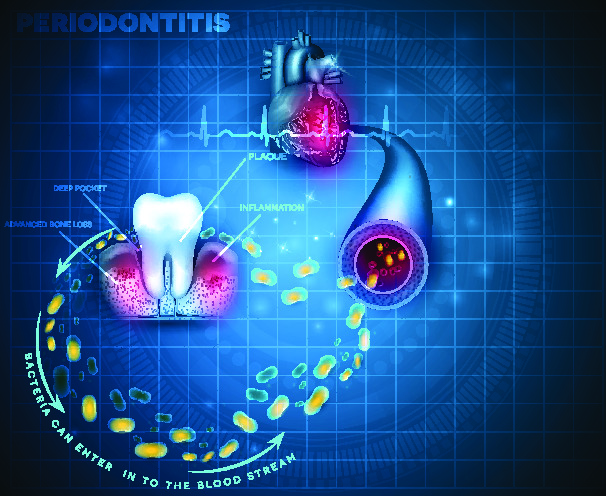
by admin | May 8, 2024 | Dental Service
In today’s age of DIY solutions for nearly everything, it’s tempting to try at-home teeth whitening kits for a brighter smile. However, many people interested in DIY teeth whitening need to realize the potential risks associated with these over-the-counter products. While the promise of a dazzling smile may be enticing, it’s crucial to understand the dangers of DIY teeth whitening and why seeking professional care from a dentist at Smile League Dental in Joliet is essential for achieving safe and effective results.
The Risk of Enamel and Gum Damage
First and foremost, one of the most significant risks of DIY teeth whitening is the potential for damage to your tooth enamel and gum tissue. Many over-the-counter whitening products contain abrasive ingredients that can erode the enamel, leading to tooth sensitivity, increased susceptibility to cavities, demineralization, and even irreversible damage in severe cases. Additionally, improper application or prolonged use of these products can irritate the gums and cause inflammation or chemical burns, resulting in discomfort and potential long-term oral health issues.
The Need for Individualized Treatment and Professional Supervision
Another concern with DIY teeth whitening is the need for individualized treatment and professional supervision. Every person’s dental needs and oral health conditions are unique, and what works well for one individual may not be suitable for another. With a thorough examination by a qualified dentist at Smile League Dental, it’s easier to determine the underlying causes of tooth discoloration and tailor the whitening treatment accordingly. Moreover, without professional guidance, patients may inadvertently worsen existing dental problems or overlook underlying issues that require attention.
Limited and Temporary Results of DIY Products
DIY teeth whitening products often provide limited or temporary results compared to professional treatments available at Smile League Dental. Over-the-counter whitening kits typically contain lower concentrations of bleaching agents, resulting in slower or less noticeable improvements in tooth color. In contrast, dentists can offer professional-grade whitening solutions with higher concentrations of bleaching agents, providing faster and more dramatic results while ensuring safety and minimizing potential side effects.
Ignoring Underlying Dental Issues
DIY teeth whitening may not address underlying dental issues contributing to tooth discoloration, such as cavities, enamel erosion, or gum disease. While whitening may temporarily mask stains, it does not address the root cause of the problem. By consulting with a dentist at Smile League Dental, patients can receive a comprehensive evaluation of their oral health and identify any underlying issues that need to be addressed before undergoing teeth whitening treatment.
The Importance of Personalized Care and Ongoing Support
DIY teeth whitening needs more personalized care and ongoing support that patients receive from a dental professional. At Smile League Dental, our team of experienced dentists takes the time to understand each patient’s unique needs, concerns, and goals for their smile. We provide personalized treatment plans tailored to address specific dental issues and achieve optimal results safely and efficiently. Moreover, our dental professionals offer guidance on proper oral hygiene practices, dietary habits, and lifestyle choices to maintain a healthy and radiant smile long-term.
A Final Word About DIY Teeth Whitening Risks
while the allure of quick and affordable DIY teeth whitening solutions may be tempting, the risks far outweigh the benefits. Seeking professional care from a dentist at Smile League Dental in Joliet ensures patients receive safe, effective, personalized teeth whitening treatments tailored to their unique needs. Don’t compromise your oral health and risk potential damage by attempting DIY methods. Schedule a consultation with us today and take the first step towards a brighter, healthier smile you can confidently share with the world.
Your Path to Confidence Begins With Smile League Dental
Choosing Smile League Dental means choosing superior care and a commitment to your enduring oral well-being. Your journey to a confident, beautiful smile starts with a call to Smile League Dental in Joliet, Illinois. Contact us to discuss our teeth whitening services in Joliet at 815-782-6243 and take the next step toward your dream smile.

by sld | Feb 20, 2024 | Dental Service
It can be all too easy to downplay the importance of preventive dentistry until it’s too late and you’ve lost a tooth or have to undergo a surgical procedure. Maintaining optimal oral health goes beyond addressing dental issues as they arise. It’s important to be proactive and prevent dental problems before they occur. Let’s shed some light on the importance of preventive dental care in preserving your teeth, gums, and overall well-being. Here are seven reasons that preventive dentistry is so important:
Early Detection of Problems
A big part of preventive dentistry is scheduling regular dental check-ups. This allows your dentist to detect potential issues in their early stages. Conditions such as cavities, gum disease, and oral cancers are more manageable when identified early. By addressing concerns at their inception, you can often avoid more extensive and costly treatments in the future.
Gum Disease Prevention
Gum disease is a common oral health issue that, when left untreated, can lead to serious complications. It’s important to brush and floss your teeth every day to remove plaque and tartar—the primary culprits behind gum disease. Professional dental cleanings further aid in preventing the progression of gum disease, ensuring your gums remain healthy and resilient.
Cavity Prevention
During your dental appointments, your dentist can identify early signs of tooth decay and provide interventions, such as fluoride treatments and dental sealants, to strengthen and protect your teeth. This proactive approach helps avoid the need for more invasive treatments like fillings or root canals.
Oral Cancer Screening
Preventive dentistry can include routine oral cancer screenings during dental check-ups, depending on your risk factors. Early detection of oral cancer significantly improves treatment outcomes. Your dentist is trained to identify suspicious signs and symptoms, and regular screenings contribute to the timely diagnosis and management of this serious condition.
Aesthetic Preservation
Beyond the functional aspects of your teeth, preventive dentistry also focuses on preserving the aesthetics of your smile. Professional cleanings, teeth whitening, and other preventive measures help maintain the brightness and attractiveness of your teeth.
Cost Savings
A preventive approach to oral health is a cost-effective strategy in the long run. Regular check-ups and cleaning, combined with early interventions, can prevent the development of more severe dental issues that could otherwise require extensive treatments. Investing in preventive care ultimately saves you both time and money by minimizing the need for complex and costly dental procedures.
Long-Term Oral Health Benefits
When you prioritize preventive dentistry, you are investing in your long-term oral health. Regular dentist visits and good habits contribute to a lifetime of healthy teeth and gums. This enhances your quality of life and protects you from systemic health issues associated with poor oral health.
Preventive Dentistry in Joliet
Prioritizing regular dental check-ups is a critical part of maintaining your oral health. Smile League Dental is the top-rated dentist in Joliet. Our passion is making sure that each one of our patients has the healthiest mouth and the brightest smile possible. Contact Smile League Dental today at 815-782-6243 to make an appointment to visit us and talk about how to be proactive with your oral health.

by sld | Nov 29, 2023 | Dental Service
Dental insurance coverage is a big factor when considering orthodontic treatment options. With the rising popularity of aligner treatments, the question of insurance coverage has become more relevant than ever. Are aligners covered by dental insurance in Illinois? What are your financial options for a straighter, healthier smile? Let’s explore some answers to these questions.
What Are Aligners?
An aligner, often referred to as a clear aligner, is a dental appliance that can sometimes serve as a less visible alternative to braces. It is a clear, plastic mold of your teeth that can be worn to gently straighten them. Aligners serve as a discreet, comfortable, and effective option for many patients seeking orthodontic treatment.
Understanding Dental Insurance Coverage
Dental insurance coverage can vary widely from one plan to another. Review your specific policy to determine the extent of your orthodontic coverage. In Illinois, as in many other states, dental insurance typically falls into two categories: traditional dental insurance and orthodontic insurance.
Traditional Dental Insurance
Traditional dental insurance usually covers preventive and diagnostic services, such as routine check-ups, cleanings, and X-rays, as well as restorative procedures like fillings and extractions. These plans may also cover a portion of orthodontic treatment costs in some cases, but this is not guaranteed.
Orthodontic Insurance
Orthodontic insurance is a separate type of coverage designed explicitly for orthodontic treatment, including braces and clear aligners. These policies provide more comprehensive coverage for orthodontic services.
Coverage for Aligners in Illinois
Illinois dental insurance providers often have specific coverage limitations for orthodontic treatments. Here are some key factors to consider:
Age Limit
Many dental insurance plans limit orthodontic coverage to individuals under a certain age. Typically, coverage is more readily available for children and teenagers.
Orthodontic Waiting Period
Some policies have waiting periods before they provide orthodontic coverage. You may need to wait for a specific period after purchasing the plan before becoming eligible for orthodontic benefits.
Pre-Authorization
In some cases, insurance providers may require pre-authorization before starting orthodontic treatment, meaning you’ll need to obtain approval from your insurance company before proceeding with aligner therapy.
Alternative Funding Options
If your dental insurance doesn’t provide sufficient coverage for clear aligners, don’t worry. There are other financing options that you may be able to explore:
Flexible Spending Account (FSA) or Health Savings Account (HSA)
These accounts allow you to use pre-tax dollars to pay for orthodontic treatment, potentially reducing your out-of-pocket costs.
Monthly Payment Plans
Many dental and orthodontic providers offer flexible payment plans that can help you spread the cost of treatment over several months, making it more manageable for your budget.
Orthodontic Discount Plans
Some organizations offer discount plans that can provide substantial savings on orthodontic treatments, including clear aligners.
CareCredit
This is a healthcare financing credit card that allows you to cover expenses related to dental and orthodontic treatment, with convenient monthly payments.
Contact Smile League Dental in Joliet
At Smile League Dental, one of our primary missions is to make dental care more affordable. If you have questions about getting aligners in Joliet, please don’t hesitate to give us a call. Our knowledgeable staff is happy to help you achieve a healthy and beautiful smile without breaking your budget. You can reach us at 815-782-6243.

by sld | Oct 18, 2023 | Dental Service
The words “root canal” strike fear in the hearts of many people. However, understanding what a root canal involves and its importance can ease those fears and potentially save your tooth. So, what exactly is a root canal and when is it helpful to have one?
A Tooth-Saving Procedure
A root canal is a dental procedure designed to treat an infected or severely damaged tooth. It involves removing the infected or damaged pulp (the inner part of the tooth) and cleaning, disinfecting, and sealing the tooth to prevent further infection. Contrary to popular belief, root canals are not painful but are performed to relieve pain and save your tooth.
How a Root Canal Help
Infection Control
When bacteria invade the pulp of a tooth, it can lead to infection. Left untreated, this infection can spread to the surrounding tissues and even enter your bloodstream, posing a risk to your overall health.
Pain Relief
An infected tooth can cause excruciating pain. A root canal provides relief by removing the infected pulp, eliminating the source of the pain.
Tooth Preservation
The main goal of a root canal is to save your natural tooth. Preserving your natural tooth is essential for maintaining proper chewing function, speech, and preventing surrounding teeth from shifting.
A Natural Smile
Replacing a missing tooth can be costly and time consuming. It often requires dental implants, bridges, or dentures. A root canal allows you to keep your natural tooth.
Common Myths About Root Canals
Are Root Canals Painful?
Thanks to modern techniques and anesthesia, root canals are no more painful than getting a dental filling. In fact, they are performed to relieve pain caused by infection.
Is Tooth Extraction a Better Option?
Removing a tooth should be the last resort. Saving your natural tooth through a root canal is generally more favorable, as it maintains the integrity of your dental arch and prevents the need for costly replacements.
Can I Just Take Antibiotics to Cure My Tooth Infection?
Antibiotics might help control the spread of an infection and temporarily relieve symptoms, but they cannot effectively address the issue alone. A root canal removes the source of the infection and is the best way to prevent the infection from persisting and worsening over time.
The Root Canal Procedure
The root canal procedure involves several steps.
Your dentist will assess your tooth’s condition through X-rays and clinical examination to determine if a root canal is necessary.
On the day of the procedure, local anesthesia is administered to numb the tooth and surrounding area. This ensures you will feel no pain during the procedure.
- Cleaning and Disinfection
The dentist creates an access point to the pulp chamber, removes the infected or damaged pulp, and thoroughly cleans and disinfects the root canals.
After cleaning, the dentist seals the tooth with a rubbery material to prevent further infection.
In many cases, a tooth that has undergone a root canal will require a crown to strengthen and protect it. Your dentist will take impressions for a custom-fitted crown.
Contact Smile League Dental
If you are looking for the safest and most reliable root canal treatment in Joliet, look no further! Smile League Dental’s team of professionals is ready to address all of your oral health needs. Give us a call at 815-782-6243.

by elision | Jun 7, 2023 | Dental Service
Millions of Americans suffer from tooth decay each year. When faced with this painful and destructive condition, patients may be presented with the option either to undergo a root canal or extract the tooth entirely. Which option is better? The answer depends upon the extent of the decay or damage to your tooth and your unique dental needs and preferences. However, when a root canal is an option, it is often a preferable choice.
What Is a Root Canal?
When the tissue inside of a tooth, also called the pulp, gets infected or damaged, it can cause pain, sensitivity, decay, and other problems. A root canal is a common dental procedure that removes infected or damaged pulp and replaces it with a filling material. A successful root canal preserves the rest of the tooth so that the patient can continue to enjoy their natural tooth without the infected pulp.
Why Choose a Root Canal?
There are several reasons to opt for a root canal rather than having a tooth extracted. Let’s discuss some of those reasons so that you can make an informed decision when you speak with your dentist about how to treat your damaged or infected tooth.
Preserving Your Natural Tooth
In some cases, a tooth might be too damaged to be saved, or an infection might be too severe to respond well to a root canal treatment. In such cases, a patient might need to have the problem tooth extracted. However, if extraction is not necessary, dentists will often recommend a root canal which would allow most of the natural tooth to be saved. The majority of root canal patients can typically anticipate enjoying a functional tooth after the procedure.
Keeping Teeth Aligned
When a tooth is extracted, the surrounding teeth may shift. This can cause bite misalignment which can lead to painful jaw problems. Opting for a root canal can preserve the natural alignment of your teeth by keeping your natural tooth in place.
Preventing Bone Loss
Tooth extraction is the most common cause of jawbone deterioration. When teeth are missing, the bone can break down, causing the jaw to weaken. Preserving a tooth and its root by choosing a root canal over tooth extraction can save the integrity of your jawbone.
Saving Money
The overall cost of tooth extraction tends to be higher than the cost of a root canal. This is because tooth extraction is often followed by dental implant placement or the creation of a custom bridge to replace the missing teeth. It often requires more long-term dental care than would undergoing a root canal. As such, a root canal is often the most time-saving and cost-effective option.
Speak With a Knowledgeable Dentist.
At Smile League Dental in Joliet, we understand the importance of helping our patients make the treatment choices that are right for them. Give us a call at 815-782-6243 to schedule a consultation with our expert team, so that you can decide if a root canal treatment is right for you.

by elision | Jul 11, 2022 | Dental Service, Dentist
It’s natural to feel uncomfortable or even a little scared of gum disease. This type of infection can have some embarrassing and painful symptoms.The best way to deal with gingivitis and periodontitis is to face the issue head-on and get the help you need as early as possible. Smile League has Joliet gum disease treatment in a relaxed, friendly, professional environment, so please reach out and schedule an appointment.For the rest of this article, we’re going to look at the research connecting gum disease to heart disease. We are also going to talk about some symptoms and preventive measures you can take.
Gum Disease and Heart Disease: Are They Related? Did you ever think about how strange it is to have a different doctor for your mouth than you do for the rest of your body? All of these systems are connected in one way or another, and we are beginning to learn more about those connections.Recent research has suggested a stronger link between gum disease and heart disease. We’ve discovered the same type of bacteria in diseased hearts as we find in infected gums. There are also correlations between gum inflammation and some types of cardiovascular inflammation.The theory is that bacteria could enter the bloodstream through the gums. From there, it ends up forming reservoirs in other parts of the body.What does that mean for your heart health? The general consensus is that people at risk of heart disease, especially those with artificial valves, should make every effort possible to maintain good oral health.
Catching Gum Disease Early To keep up with your oral health, you’ll want to pay close attention to any changes involving your teeth, gums, or mouth. Here are some symptoms to watch out for:
- Bad breath (not just after food or drink)
- Bleeding when you floss
- Changes in the appearance of your gums (different colors or puffy-looking gums)
- Longer-looking teeth (receding gums)
- Swollen or reddened gums
- Bleeding or pain, especially without flossing
- Loose teeth or teeth falling out
There’s no such thing as a minor symptom of gum disease, but some of these are obviously more serious than others. Please contact us if you have any of them — and preferably reach out before you start feeling pain or serious discomfort.
Preventing and Treating Gum Disease Gum disease is typically a progressive problem that we control early through focused changes in habits. Sometimes, we recommend professional intervention. There are also some things that could prevent it (or prevent it from getting worse):
- Brushing and flossing regularly
- Quitting smoking
- Getting professional cleanings
- Having regular preventive dentist appointments
- Getting deep cleanings
- Taking certain types of antibiotics
Treatment really depends on your exact condition — we’ll have to take a look to see what we can do. Also, if you already come in a couple of times a year, you can be confident that your dentist is already keeping an eye out for any signs of gum disease.Hopefully, that provides a good summary of what we currently know about the link between gum disease and heart disease. For more questions or to make an appointment, feel free to reach out to our experienced family dentists in Joliet at any time.







Recent Comments